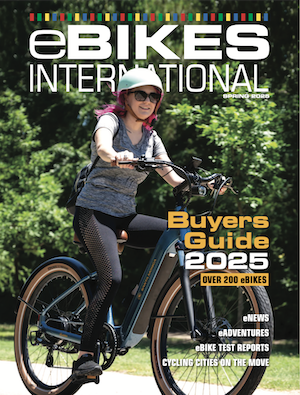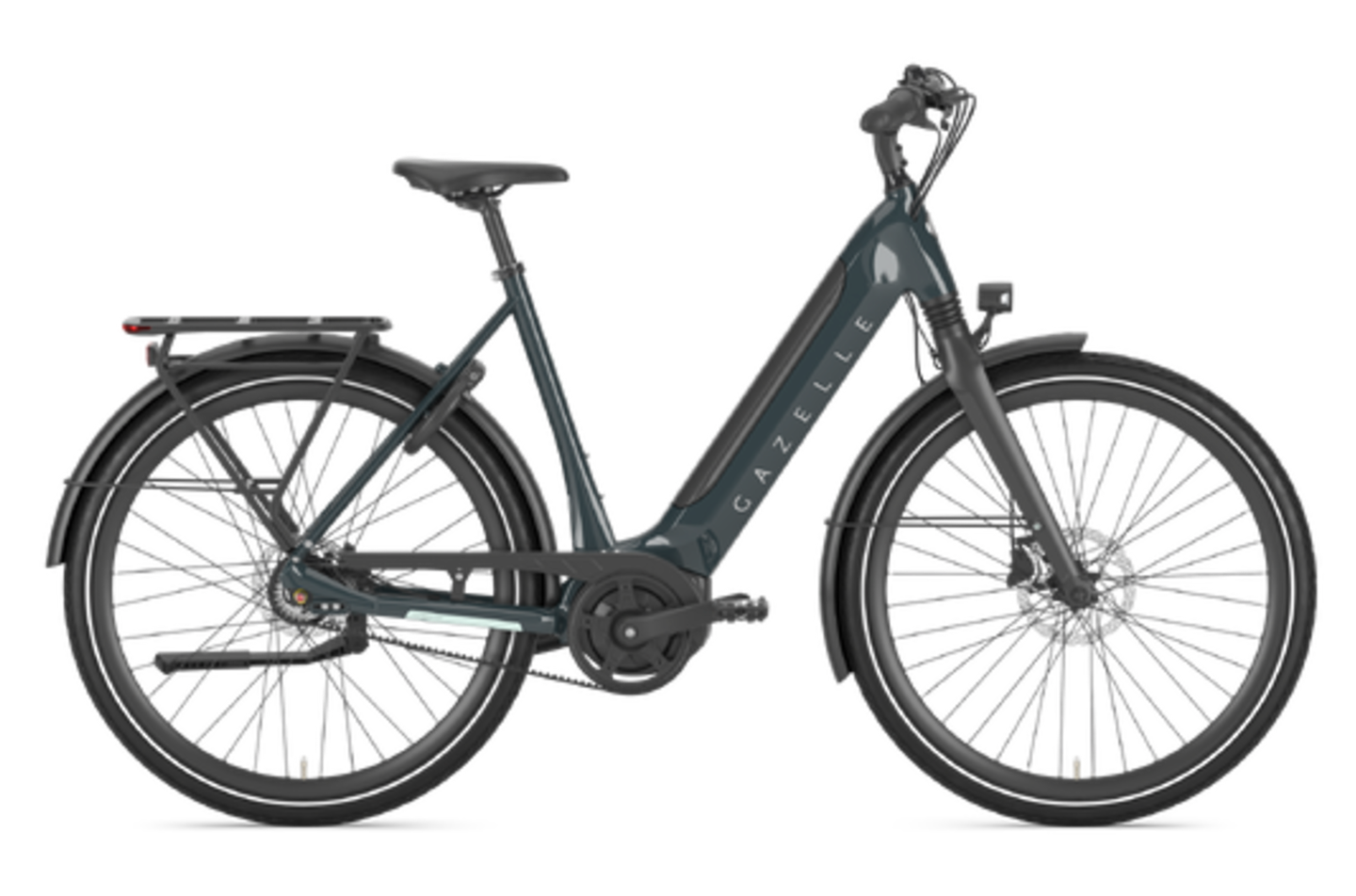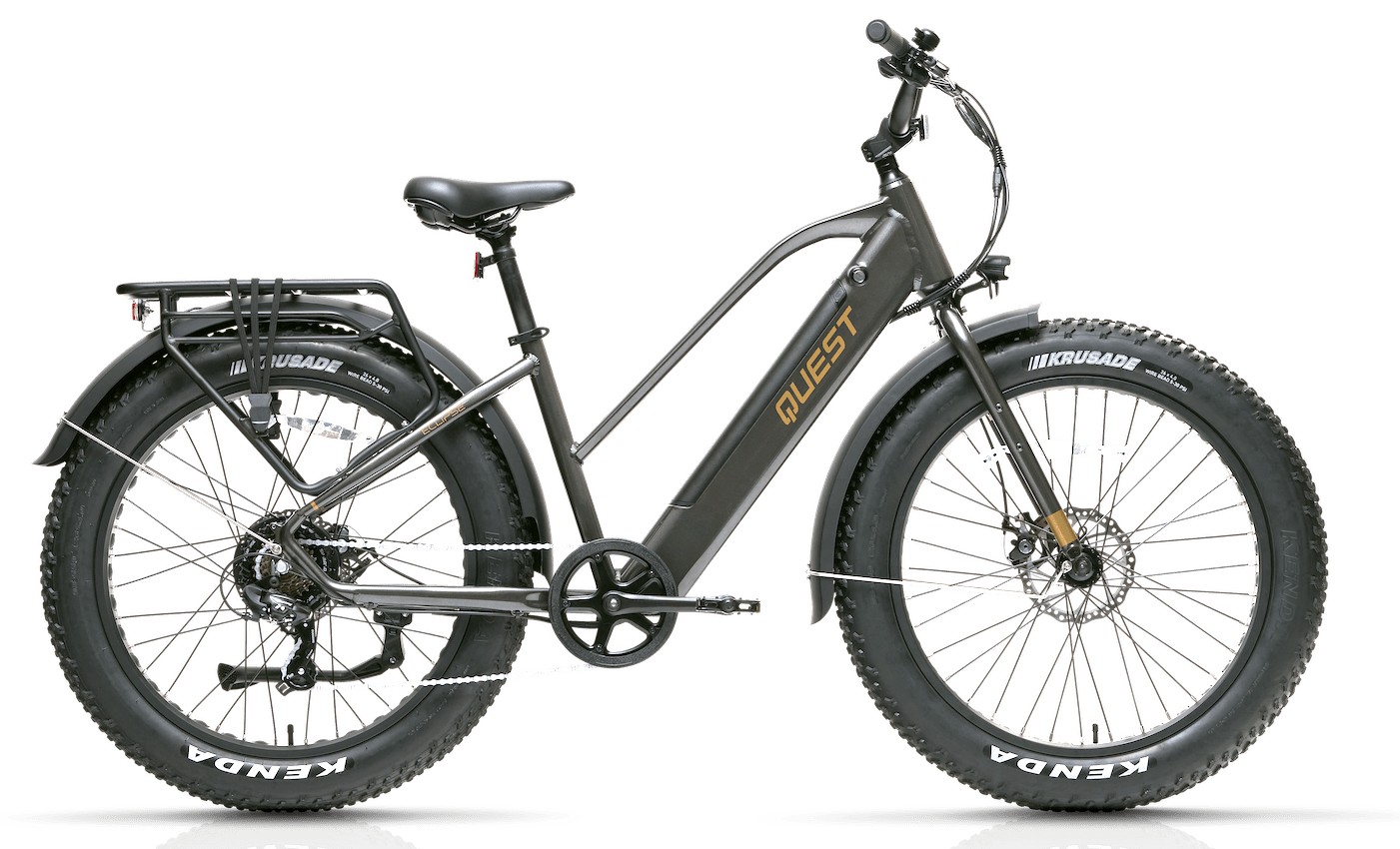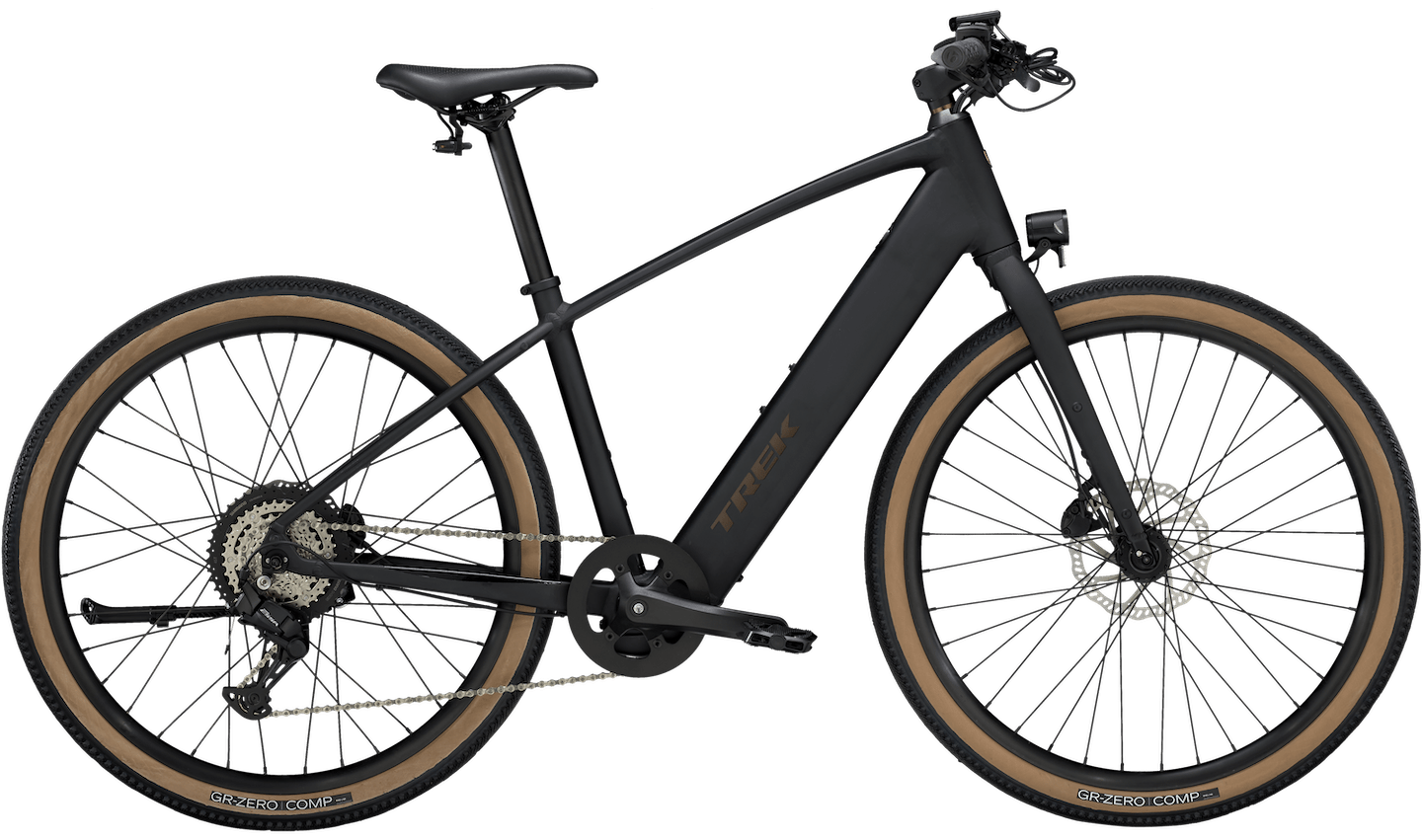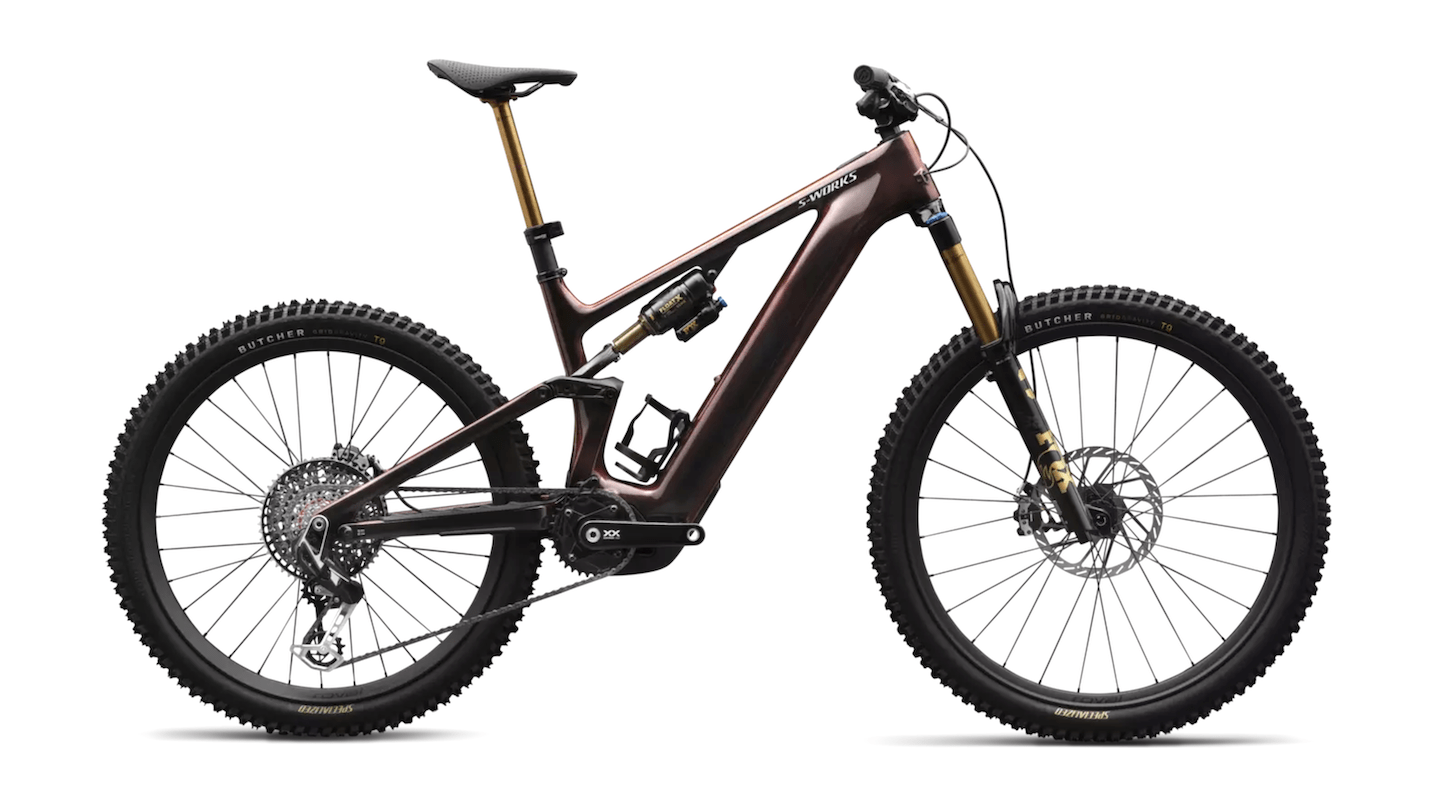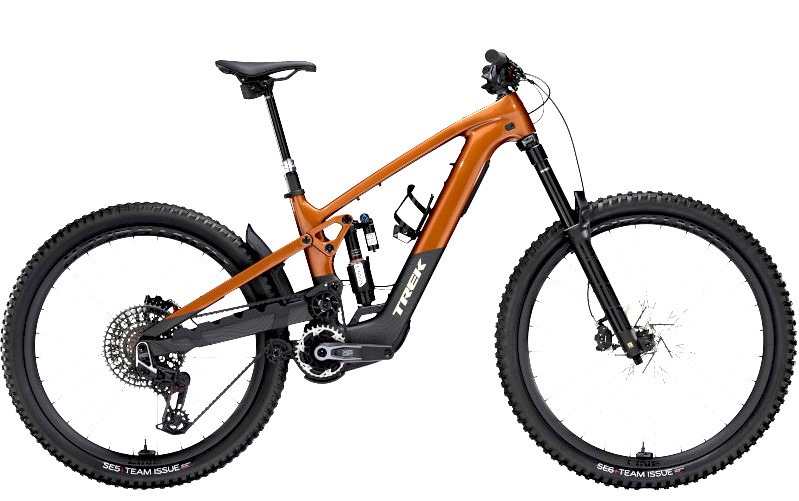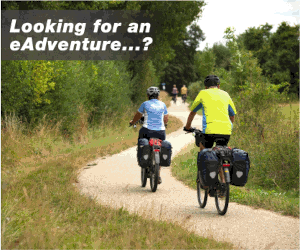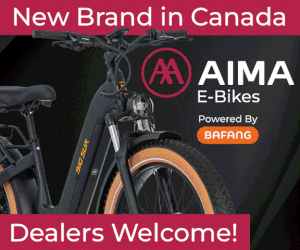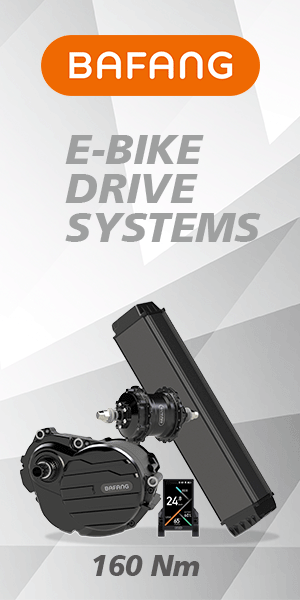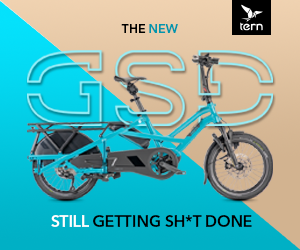July 8, 2022 - (Toronto, ON) Toronto’s Curbside Cycle has been at the forefront of the cycling mobility movement in Canada and North America for 30 years. With humble roots, unbridled passion, and a pioneer spirit, they were the first to import unique European brands including cargo bikes over two decades ago, en route to creating a niche urban specialty market that few can rival. The current surge in popularity of urban cycling is a fitting testimony to their innovative path and eBikes International caught up with General Manager, Eric Kamphof for a look at the bike shop’s past, present and future.
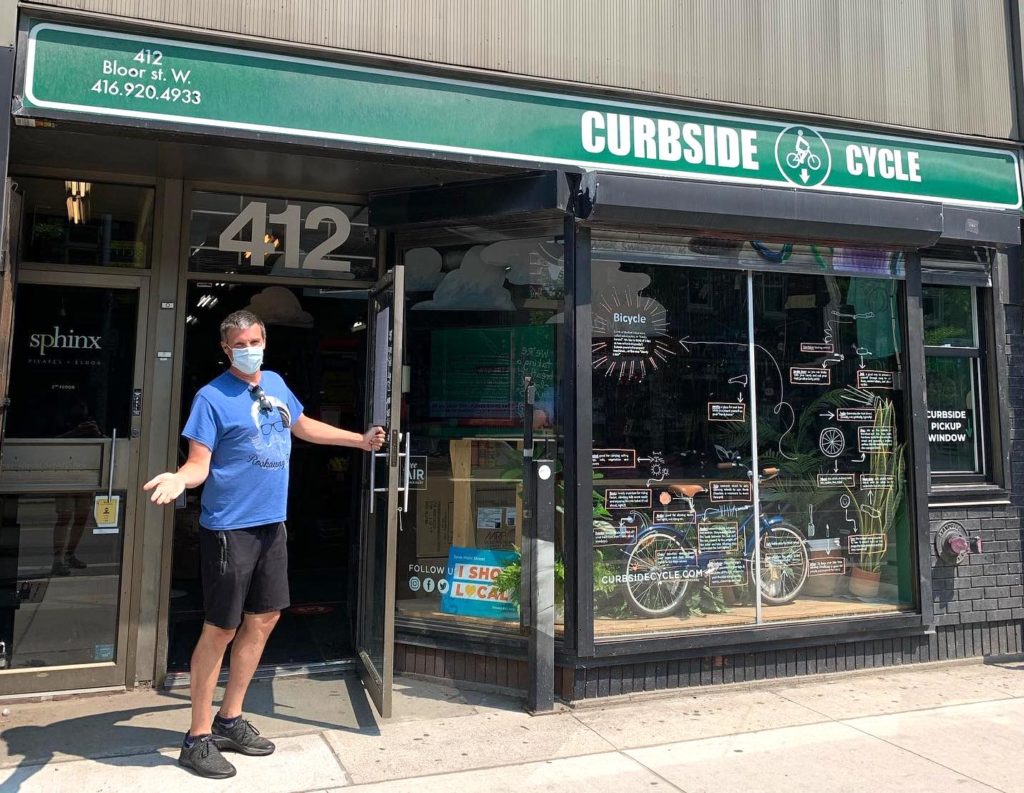
Please give us a brief history of Curbside Cycle.
Eric Kamphof: Curbside was started by Don Watterson back in 1992 – at least we’re pretty sure that was the year. Unfortunately Don passed away in 2017 but his legacy lives on. It started as a semi-legal tent on the side of a curb, dedicated to Toronto’s highly contrarian Annex neighborhood. The Annex neighborhood has always been famous for its collective urbanism. It was home to Jane Jacobs and its residents famously won a battle against a Robert Moses style freeway that would have utterly destroyed downtown Toronto’s urban fabric. Our customers are those who decided to live downtown and quickly realized that most of their trips were too close to drive and too far to walk. The original Curbside tent won the hearts of the Annex and we grew from there to our first brick and mortar location. This advanced to our current location, where we really began to find our feet.
Curbside was one of the first bike shops to import unique brands from Europe… how did this come about and were they well-received?
EK: I came to the store in 2002 while writing my Masters thesis and instantly fell in love. I’ve worked in several high-end road and mountain bike stores across Western Canada and I immediately realized Curbside was a very special place. The clientele were all city cyclists and split between the sexes. Curbside also sold a ton of accessories but we were experiencing a terrible devaluation in our repair shop as customers who bought a hybrid bike for city riding were experiencing endless repairs – at a discount – as these bikes weren’t really meant to be city bikes.
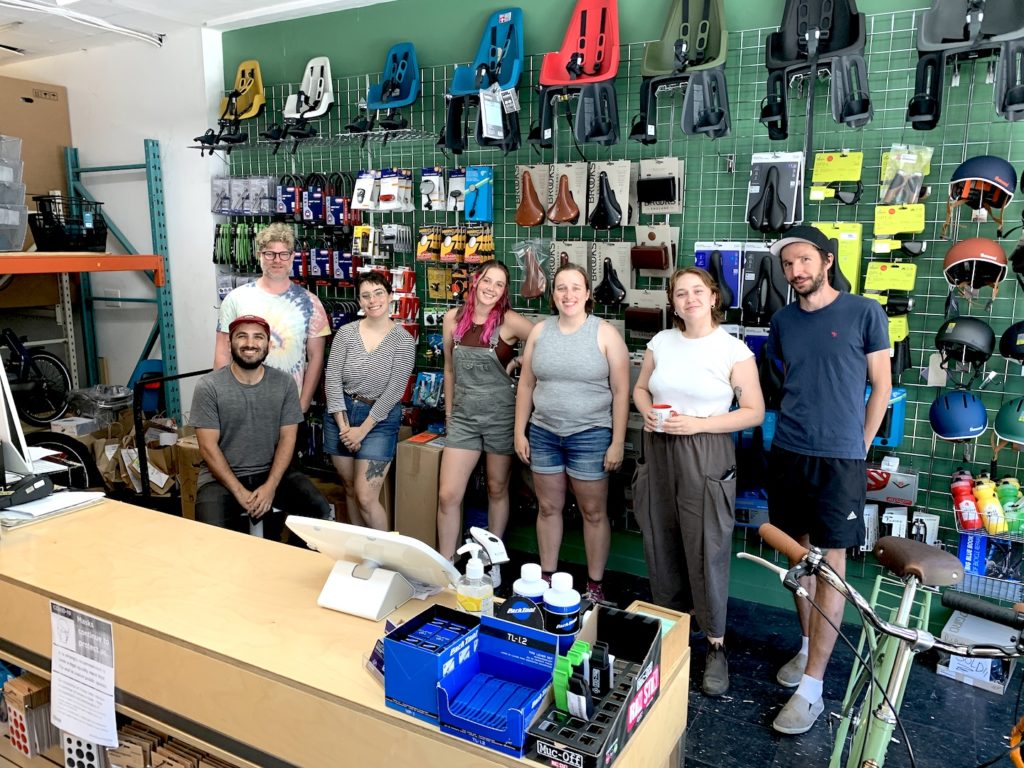
My background is Dutch and we got this crazy idea that maybe we should import Dutch city bikes. We had to travel there buy a container of bikes which was risky as hell as we were mostly a used bike store. But our well-educated and well-traveled Annex customers saw exactly what we were doing and we sold that container within a month or two. We then realized that we had access to great city bikes via the entire European continent that no other shop or supplier seemed to cared about, and we started developing the portfolio of leader brands we have today.
When did Curbside first start selling e-bikes… and how did customers react ?
EK: Our story is probably different than most bike stores because our e-bike story begins with cargo bikes. Research in Holland shows that e-bikes on their own tend to serve distances greater than 7.5km and most of our customers live within 7.5km of work and daily errands; but with a cargo bike even short distances are facilitated by e-assist. A cargo bike, unlike a regular bike, is always changing it’s gross vehicle weight, so e-assist has always made sense. When we started importing the electric version of cargo bikes, it required very little explanation. Today, our chief e-assist market is still cargo bikes, but we do very well with stand-alone e-bikes as well.
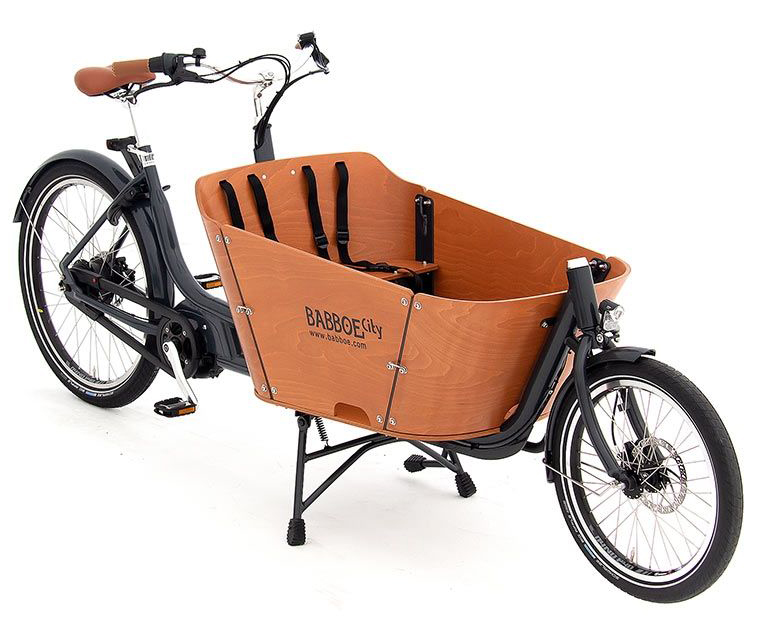
When did you first introduce cargo bikes and tell us more about this expanding segment?
EK: We started importing cargo bikes back in 2007, just before the great recession hit and a massive shift in demographics was taking place. More and more people were moving downtown, choosing to buy property based on proximity, rather than the suburban dream. Driving was a more expensive luxury as people reassessed their habits. Back then it was Curbside and Clever Cycles (in Portland OR) who started importing cargo bikes, laying the groundwork for what we see today. We started with Babboe from Holland, who were the first brand to figure out how to flat-pack cargo bikes, and this export-ready approach helped sell this new cycling category at reasonable prices. Back then, the customer was an early adopter; most often female, well-researched, and not remotely a self-identified ‘cyclist.’ These customers were concerned about safety first, and in a city with limited cycling infrastructure, an impact resistant box was a safety asset. These customers were chasing something that they knew just made sense – if you live most of your life in what Dutch research indicates as an ‘action radius’ of around 7.5km, then a cargo bike can handle the majority of your transportation needs. About 50% of all car trips in North America are under 7.5km, so cargo bikes will continue to gain traction here as they are in Europe.
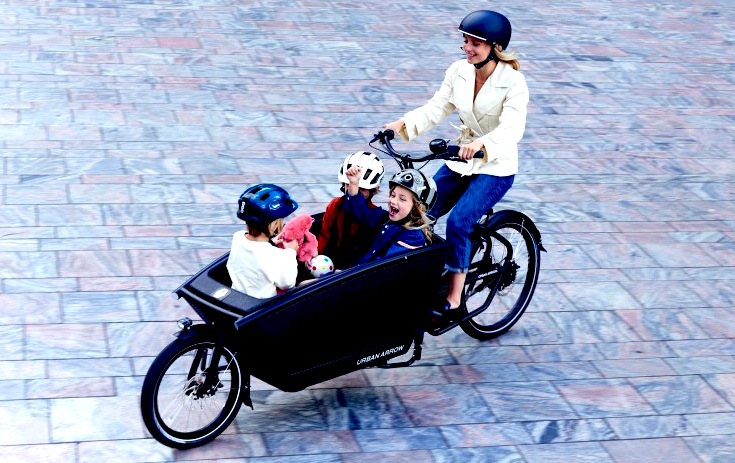
What brands and types of e-bikes and e-cargo bikes do you currently stock?
EK: We make a point of thoroughly investigating every brand we import. It needs to be torture-tested in its home market for us to consider importing it. We go to each market, see what brands are being used, observe the condition of bikes parked outside, visit factories, and find the companies that show the greatest leadership and who can support an export market. We started with Babboe and moved from there to Nihola (for a three-wheeled option). Our very first e-assist brand was Urban Arrow, then Bullitt, then Black Iron Horse and Winther and finally Riese & Muller. Each of these offered different levels of stability and handling, and all offer the same impact-resistant safety for carrying kids. For regular e-bikes we carry Brompton, GoCycle, Devinci, and Riese and Muller.
How has the recent pandemic impacted things and the e-bike and cargo bike sectors of your business?
EK: Yeah, it’s been pretty crazy. Our revenues doubled in the last two years, but what we’re really happy to see is that our little experiment is working. People used to walk into the store look at a cargo bike with incredulity, but now they ask for cargo bikes by name. The radical shift and increase in infrastructure has obviously helped as well. As awful as Covid has been, it’s raising the consciousness for cycling.
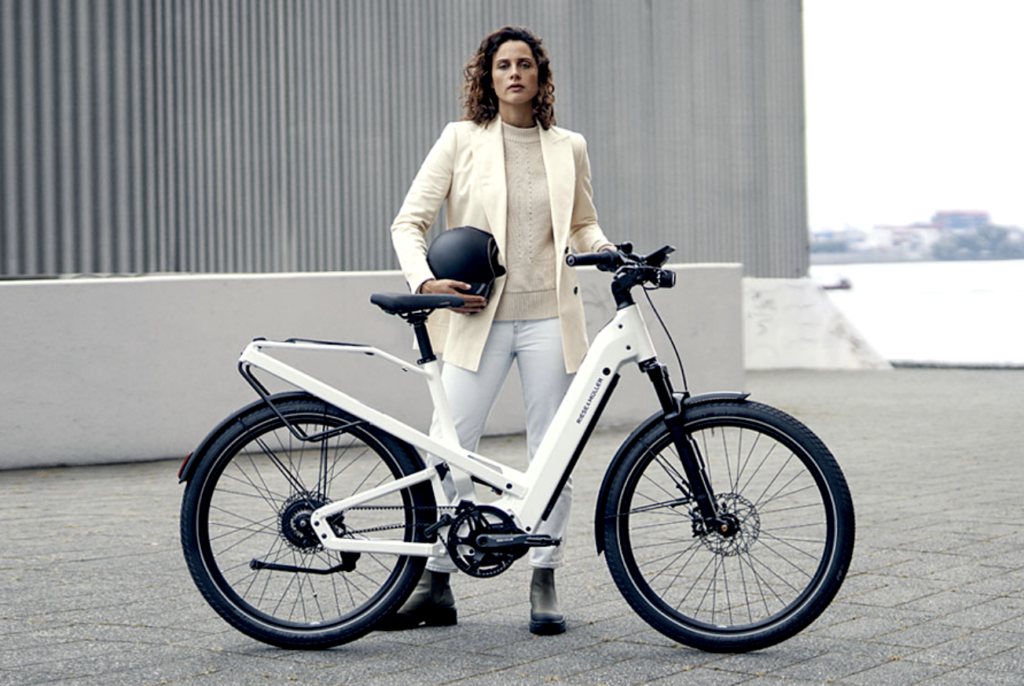
Talk about the demographic of your customers in general… and for e-bike and cargo bike sales?
EK: Great question. For cargo bikes the demographic would be anyone “urban”, someone who lives a majority of their lives within 7.5km of home (or 15km in the case of an e-assist). I would say 70% of our buyers are identified as a female parent. For e-bikes it seems more tilted towards the recreational rider – not sure why. While studies from Holland show that e-bikes are really carving out a space in distances between 7.5km to 15km, we haven’t seen the same demographic here as yet, but we believe it’s coming. Part of that is infrastructure, part of that is people understanding that though they might not live downtown, their commuting distance is easily serviceable by an e-bike which also makes more sense from a cost, efficiency and health point of view. High gas prices and better marketing towards this demographic will assist in changing this direction. We’ve also come to realize these kinds of changes take time, and persistence.
Has the pandemic and climate change expanded the market of customers interested in cycling as a new mode of transportation?
EK: All of us are aware of climate change and people are eager to do their part. Customers who buy an e-bike or e-cargo bike see the positive impact on their lives pretty quick, while also doing something very tangible and good for the environment. The e-cargo bike market began to flourish during the previous recession crisis, and hasn’t really stopped since. The pandemic has pushed cargo bikes over the so-called tipping point – we see nothing but future growth here.
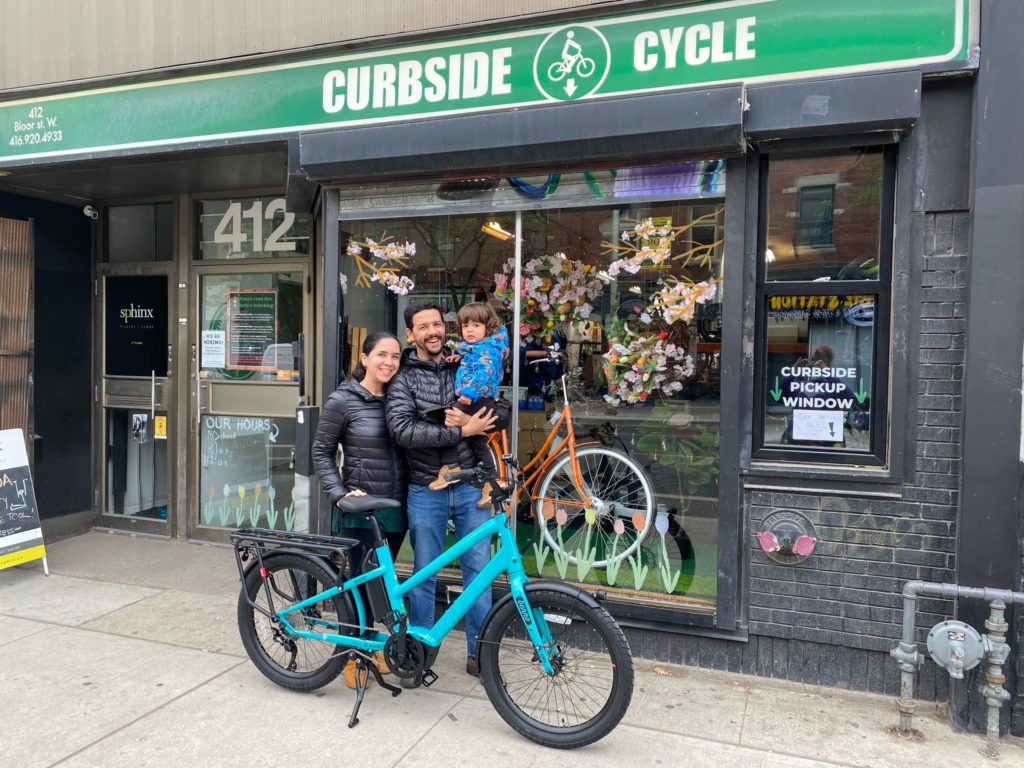
Toronto has expanded its cycling infrastructure i.e. Bloor, Yonge, University with more coming – what’s your perspective ?
EK: Yep, it’s been pretty amazing but we still need more bike lanes! Again, if e-bikes can offer a majority transportation tool to people whose ‘action radius’ is about 15km, then more bike lanes that reach deeper into the suburbs that connect downtown would really help reduce congestion and gridlock for commuters who live relatively close to downtown.
When did you launch Fourth Floor Distribution to provide your unique products to other bike shops across Canada?
EK: We launched Fourth Floor about the same time that we began importing European city bikes and cargo bikes back in 2007. Our mission was always to increase city cycling by offering the proper tools, and it seemed we had access to a wealth of products not sold in North America. Europe is a mature city-cycling environment where strong regulations control quality and safety and where companies continue to produce products in their own factories. Currently, except for Devinci, no North American brand (as far as I know) has their own factory. Also many brands lack the experience to truly understand the urban context of the cargo bike market. Today Fourth Floor has at least one evangelical retailer in every major Canadian city and it’s just been awesome to see bike retailers look beyond their own tribal interests and increase the relevance of cycling. Our retailers are truly revolutionizing city cycling across Canada and their entrepreneurial spirit is amazing to observe.
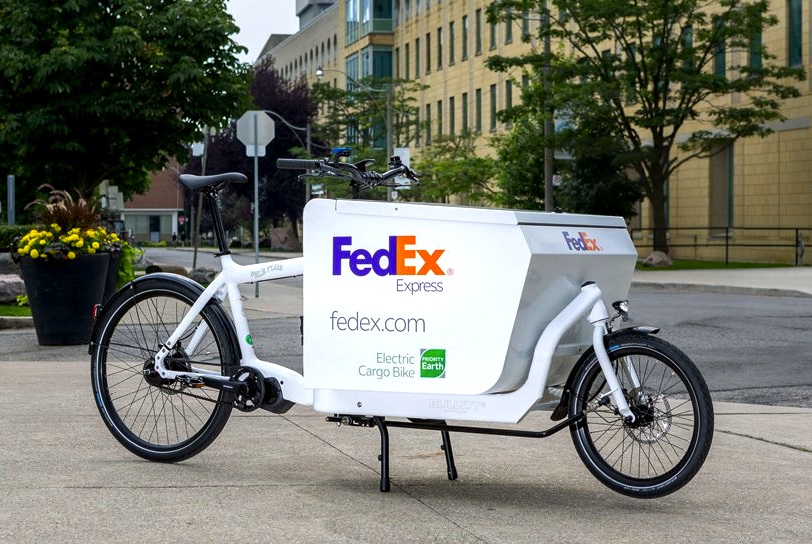
Tell us more about your involvement with FedEx and their e-cargo bike pilot program ?
EK: For sure. I remember being back in Groningen about ten years back and seeing a DHL Bullitt cargo bike and thinking, damn… this is the future. Since 2008 we’ve been selling cargo bikes to businesses and NGO’s (non-profit organizations), mostly as mobile kiosks but some as delivery vehicles. We always knew cargo bikes for delivery was going to happen, but that it would take a lot of philosophical onboarding. Luckily, the Pembina Institute – a major Canadian think tank devoted to CO2 reduction – saw cargo bikes as a critical way for CO2 reduction in cities and did the education piece. The reason Pembina got involved is because truck traffic is increasing with population density and the rise of ecommerce, and trucks emit a lot of CO2. Pembina threw three big events, all at prestigious locations, and had the major heads of state from FedEx, Purolator, UPS, et al in attendance. All of these companies were keen to understand how to build efficiencies in the so-called ‘last mile’ of delivery because that’s where up to 60% of a package’s cost can occur as they’re stuck in gridlock. In short, these companies were feeling the pain. Pembina showed that Europe wasn’t all that different from North America. Both have dense cities where people work, live and play downtown. All that was needed was a small downtown feeder hub and a fleet of cargo bikes that were designed to cut through gridlock. FedEx was one of the first to jump on board and wanted a cargo bike that resembled a truck but realized these would be also be stuck in gridlock. They chose Bullitt because it’s light, narrow, and a proven cargo bike. The results have been impressive. The Bullitt has a cost-benefit ratio of 10.7:1 versus a truck, and is delivering 17% more packages than a truck in 19% less hours. That is saving 65% per package vs a truck. We expect to see many more Bullitt’s in the FedEx fleet as well as more courier companies approaching us in the years to come.
What do you ride ?
EK: Like many bike shop people, I am guilty of owning too many bikes. But, for sake of context I do own a Bullitt e-cargo bike and darned if it hasn’t changed the way I do everything. There’s a certain ergonomics that living in the city requires, and this bike has been a perfect fit. It elevates almost every task. Plus, I have lots of fun!
Thanks for your time and all the best.
EK: Thanks as well.
Learn more about Curbside Cycle here.



